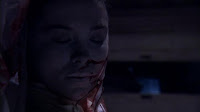Editors: Barbara Brodman & James E Doan
First published: 2013
Contains spoilers
The blurb: Since the publication of John Polidori’s
The Vampyre (1819), the vampire has been a mainstay of Western culture, appearing consistently in literature, art, music (notably opera), film, television, graphic novels and popular culture in general. Even before its entrance into the realm of arts and letters in the early nineteenth century, the vampire was a feared creature of Eastern European folklore and legend, rising from the grave at night to consume its living loved ones and neighbors, often converting them at the same time into fellow vampires.
A major question exists within vampire scholarship: to what extent is this creature a product of European cultural forms, or is the vampire indeed a universal, perhaps even archetypal figure? In this collection of sixteen original essays, the contributors shed light on this question. One essay traces the origins of the legend to the early medieval Norse
Draugr, an “undead” creature who reflects the underpinnings of Dracula, the latter first appearing as a vampire in Anglo-Irish Bram Stoker’s 1897 novel,
Dracula.
In addition to these investigations of the Western mythic, literary and historic traditions, other essays in this volume move outside Europe to explore vampire figures in Native American and Mesoamerican myth and ritual, as well as the existence of similar vampiric traditions in Japanese, Russian and Latin American art, theatre, literature, film, and other cultural productions.
The female vampire looms large, beginning with the Sumerian goddess
Lilith, including the nineteenth-century
Carmilla, and moving to vampiresses in twentieth-century film, literature, and television series. Scientific explanations for vampires and werewolves constitute another section of the book, including eighteenth-century accounts of unearthing, decapitation and cremation of suspected vampires in Eastern Europe. The vampire’s beauty, attainment of immortality and eternal youth are all suggested as reasons for its continued success in contemporary popular culture.
The review: I do like books like this but they come with two problems. One is the price tag – though I understand that an academic piece is not going to sell as well and that influences the tag. The second is a variance of quality between contributors’ pieces and the Universal Vampire is no exception when it comes to that.
Looking at the blurb, for a moment, the premise of the book is looking for universal roots within the vampire genre. The book doesn’t actually do that, in totality at least, though it does take us on an international journey.
However the first chapter, Draugula by Matthias Teichert, certainly did this and I find the exploration of both Draugr and Revenant myths and legends fascinating. It is clear that there are heavy similarities to the vampire myth that developed amongst the Slavic nations. The biggest difference was the vampire seemed to have a fixed focus on blood drinking (often, it seems, assumed due to the corpse state when exhumed) and the other types not so much. Blood drinking and flesh eating do appear within some of the myths, but not so much in this essay, which nonetheless was informative and thought provoking.
Flying to the other end of the spectrum, the piece Biomedical Origins of Vampirism by Edward O. Keith could have been left out of the book altogether. A tired re-hash of the discredited porphyria theory (with an almost embarrassed admission that the theory does not fit) is followed by equally tired looks at Pellegra and Rabies. This misses the point that illness as a source of the myth does not rest with a condition suffered by the accused vampire (as they are dead by the time an assumption of vampirism is reached) rather it is with the victims. As such this chapter managed to completely avoid tuberculosis – a disease that we know certainly did influence folk opinion in the 19th century American panics. It was amusing, therefore, that the next chapter, Evidence for the Undead by Leo Ruickbie, shot down Keith’s chapter in a couple of paragraphs. The Keith Chapter also showed a lack of remembrance or knowledge of Dracula with suggestions that the Count avoided daylight (he certainly was abroad in daylight and one of the supporting quotes for this assertion is misattributed to the Count when it was Van Helsing’s dialogue) and only preyed on women prior to their marriage (Mina was married before she attracted the Count’s nightly visitations).
If that chapter is the low point in the book there was a Lilith chapter that was pretty light and a view that Stoker (and subsequently Dracula scholars) got details of Transylvanian society and cuisine wrong was met with a mighty shrug of the shoulders as it is clear that Stoker only used travel books to research that setting. In honesty the argument was very sound but the point of the debate was lost on me.
As well as the Draugula chapter and Ruickbie chapter particular favourites included a chapter by Ridenhour comparing Carmilla and
Let the Right One In and Ruthner’s look at Visum et Repertum, the report of the Arnold Paole case.
All in all, for the full volume
7.5 out of 10.





































































